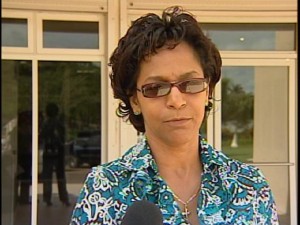NEMO says CAPRA will aid in disaster risk reduction
We’re halfway through the hurricane season and the message we constantly hear is to be prepared. And while national disaster response plans are in place, the National Emergency Management Organization (NEMO) is now putting more emphasis on measures to mitigate the overall impact of storms and other disasters. They plan to do that using a tool called the Central American Probabilistic Risk Assessment (CAPRA). This—the second national CAPRA workshop—ended today and was hosted at the NEMO Headquarters. It provided a space for government agencies, private sector, NGOs and other stakeholders to discuss ways to enhance disaster risk reduction based on a more scientific approach. News Five spoke to Noreen Fairweather, the National Emergency Coordinator, to find out more about CAPRA.
Noreen Fairweather, National Emergency Coordinator
“Really, it’s a decision making tool so that we can better manage the impact of the hazards when they affect the country. There’s nothing we can do about the hazards coming, but what we want to be able to do is reduce the impact on the country and the people. So basically that’s what the whole idea of CAPRA is targeting.”
Delahnie Bain
“Is there an emphasis on, for example, hurricanes since we’re more likely to have a hurricane?”
Noreen Fairweather
“Well, we’re looking at all hazards. We’re looking at hurricane, we’re looking at floods, we’re looking at storm surge from hurricanes, looking at fire. So we can look at all hazards. Realistically, when we start to churn up this data and this information, obviously we have to put them in some order of priority.”
Delahnie Bain
“Looking at the Capra tool and our current national plan that’s already in place, is there a lot that needs to be improved?”
Noreen Fairweather
“Improvement in the sense that it makes our decision making a lot easier. We have in the past years, for the most part, relied on historical information and institutional memory. This really is a more scientific approach, a more technical approach to coming to those decisions in a much more accurate way and a much quicker way because the whole idea of CAPRA is to look at the probability of things happening based on information. So yes, we know at certain locations a flood might happen down the Belize River Valley in a certain area. Every time it rains the water goes up. We are saying we can now, with some degree of accuracy, say what is going to happen in a certain area based on the data that’s available.”
According to Fairweather, their next task is to input their data in the CAPRA system—automated for higher efficiency.

